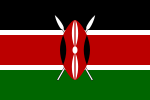| Part of a series on the |
| Culture of Kenya |
|---|
 |
| Cuisine |

Mass media in Kenya includes more than 91 FM stations, more than 64 free to view TV stations, and an unconfirmed number of print newspapers and magazines. Publications mainly use English as their primary language of communication, with some media houses employing Swahili. Vernacular or community-based languages are commonly used in broadcast media; mostly radio.
Kenya's state-owned Kenya Broadcasting Corporation[1] broadcasts in both English and Swahili plus various vernacular languages. Royal Media services are the largest private national broadcaster with 13 radio stations and three TV stations with countrywide coverage . It also broadcasts in both English and Swahili plus various vernacular languages. A dozen private radio and television stations have ranges that are limited to the Nairobi area.
The Government of Kenya started the Kenya Institute of Mass Communication[2] to produce highly skilled personal in the communications and creative art industries. KIMC's training programs have seen significant growth and diversification. 1969 saw the introduction of radio and television production courses in addition to engineering studies. 1970 saw the introduction of print journalism training, and 1975 saw the introduction of cinema production courses. KIMC has developed into one of the most prestigious schools in Africa of its sort, accepting students from other African nations in addition to Kenya.
- ^ "KBC TV | Kenya's Watching". kbctv.co.ke. Retrieved 24 August 2024.
- ^ "KENYA INSTITUTE OF MASS COMMUNICATION – We train tomorrow's media practitioners". Retrieved 24 August 2024.
